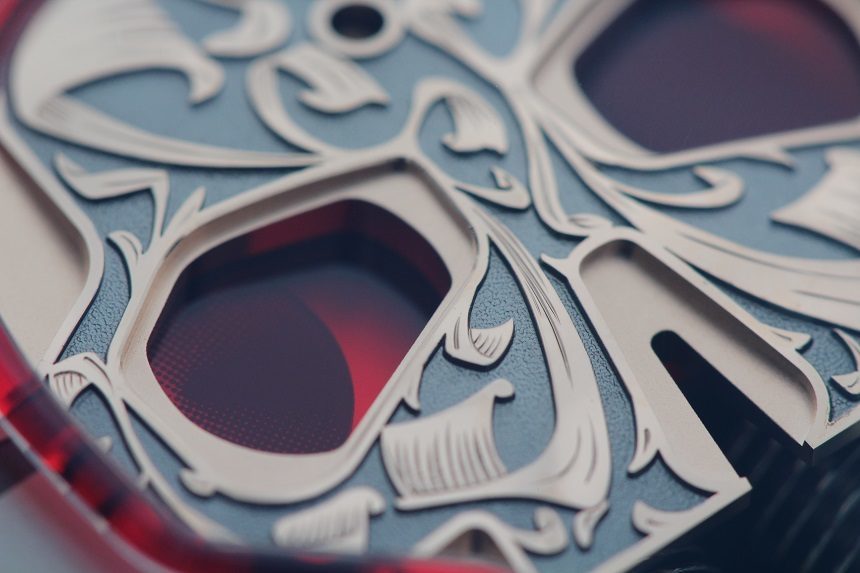
HYT is a brand that likes to be different. If you’re unfamiliar with this burgeoning operation, their brand message can be summed up in two simple words: watchmaking and fluids. In all of HYT’s innovative timepieces, the hours are indicated by a coloured liquid that creeps through a custom capillary encircling (or traversing) the dial. It’s a novel concept that the brand teams with avant-garde styling – a combination that sires strong opinions and great debate on the merits and demerits of their wares. Not only does the dial-dominating motif of the HYT Skull Maori watch (debuted here) require the fluid-filled capillary to bend to its will, it’s so massive, it precludes the possibility of fitting a minute hand. After spending a few days with the HYT Skull Maori on my wrist, I’ve had time to form a few opinions about it; and I am pretty sure it will also inspire a range of feelings from everyone who takes a better look.
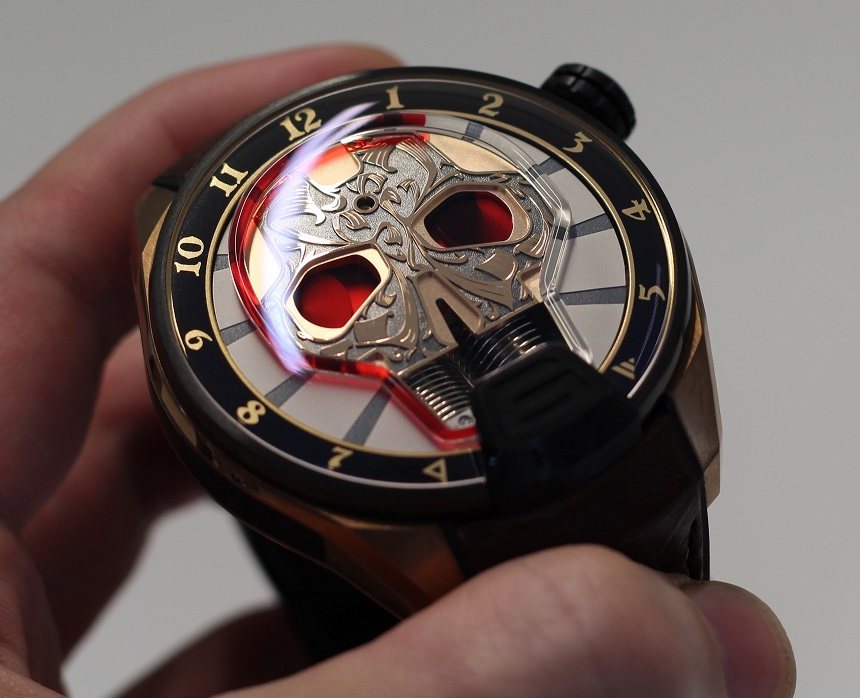
Whenever I’m lucky enough to strap on an HYT wristwatch, one word pops into my head: striving. The off-the-wall brand from Neuchâtel are always reaching for something new and exciting. Sometimes they do this with revolutionary technology; sometimes they do this with bold design; sometimes they do this by forming dynamic partnerships with aspirational institutions. But whatever they do, they do it with a buoyant streak of joy and absolute assurance that someone will love their new product. Wearing the HYT Skull Maori watch for a few days garnered more attention than usual. For starters, at 51mm, it is pretty big (well, huge) and so it can’t fail to be noticed. But this watch seemed bigger than all others that utilise the established HYT H1 case because of the massive skull, rendered in rose gold and hand-engraved to dazzling effect.
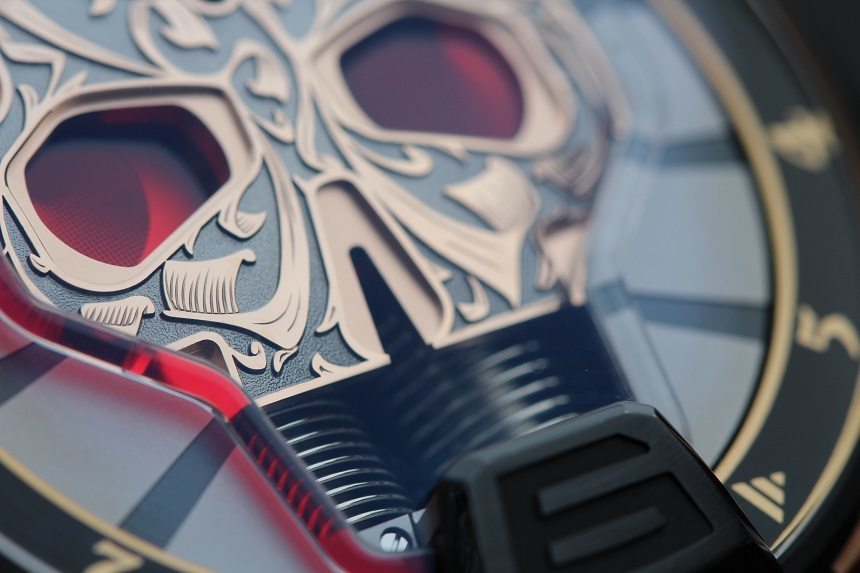
So let me define what I mean by “attention.” People noticed the watch from twenty paces and scurried over to see what this glitzy wrist-giant was all about. Their reaction was immediate, but varied. Most people fawned over the watch for its stirringly cool façade before they’d even begun to appreciate the mechanical majesty at work. But a good few people just didn’t get it. And you know what? I bet HYT wouldn’t want it any other way.
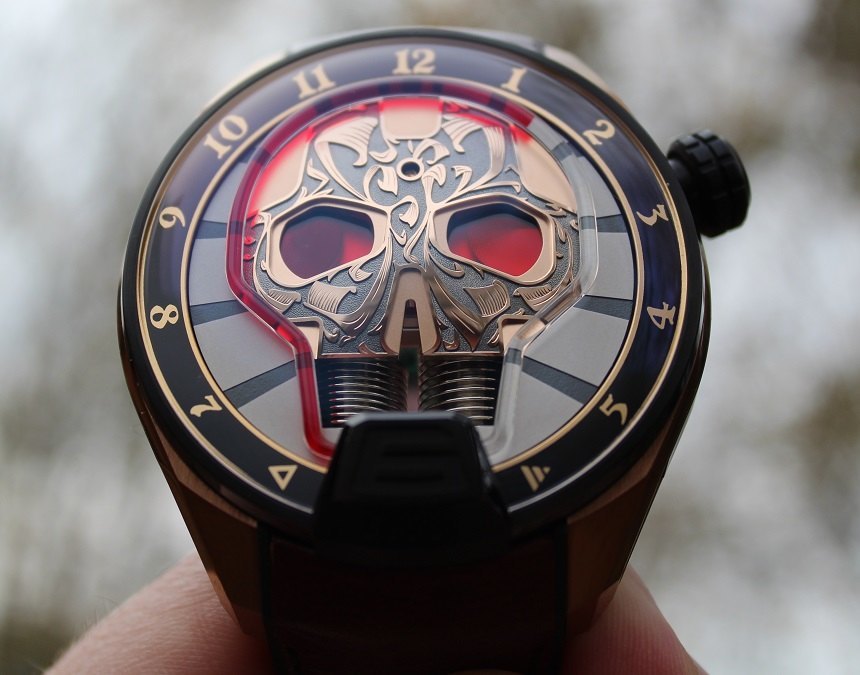
They must have known they’d come in for a boat-load of criticism when they made the decision to drop the minute hand. Before going back to my thoughts on the Skull Maori, I’ll say that a lot of the people I spoke to about the watch listed this omission as their number one complaint, some asking if it even qualified as a watch if it didn’t clearly indicate the time. It’s a fair enough detraction, but kind of misses the point. If you can afford to buy into this brand culture, you are probably going to wear this piece on occasions when you don’t need to know what time it is exactly. For us mere mortals, who are unlikely to ever own an HYT, the watch can be appreciated for its artistic merits and celebrated for its technical achievements.

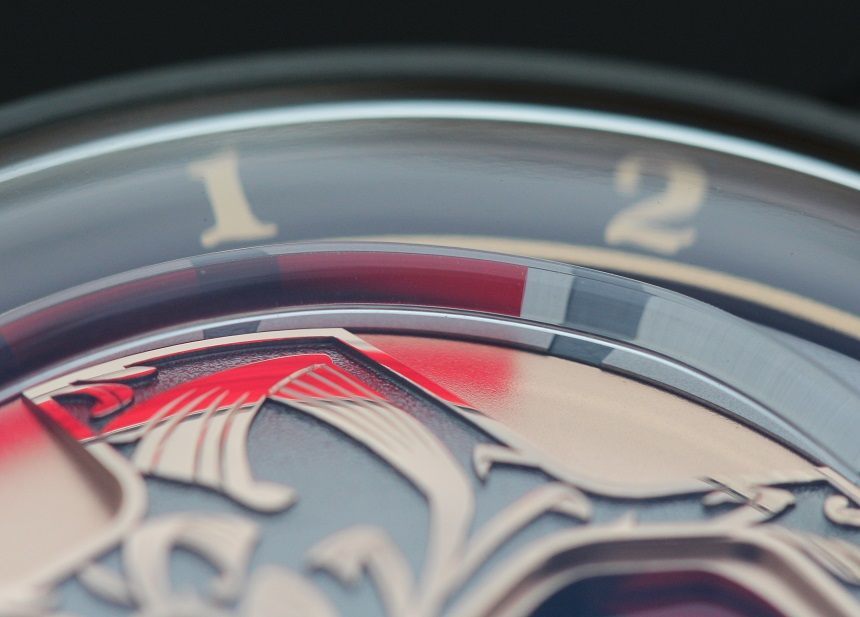
Starting with the tech side of things, because that’s what HYT is best-known for, let’s study that fluid-filled capillary for a second: the challenge with this watch, as with all watches in the HYT Skull range (debuted and discussed here), is to maintain a consistent flow of the fluid as it negotiates the bends in the glass tube it calls home. HYT’s standard fluid indicator, as seen on the H1, H2, and H4 models, is impressive enough, but when you compare it to the technical challenge of the Skull Watches, they almost pale in comparison. It’s another brazen foray into the unknown and is incredibly satisfying to watch in action.
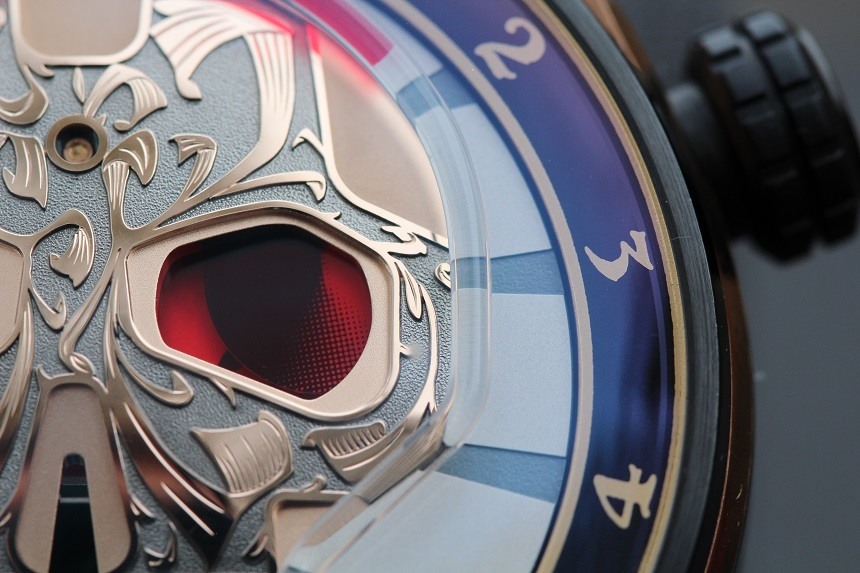
It’s very difficult to restrain oneself from constantly playing with the “time-set” function. The screw-down, rubber-clad crown winds in the neutral position, and pulls out once to set the hour. Upon rotating the crown, with a momentary lag, the red fluid of the HYT Skull Maori watch creeps around the dial’s focal point until it reaches the end of its journey and retraces its steps. Technically speaking, this qualifies as a retrograde hour indicator, but it is the most languid I have ever seen. It’s tough to set the time accurately unless you are doing so on the hour, but as I mentioned, this watch is more about the fusion of crafts than it is about telling the time. You’d never see an HYT timing the Olympics, but you might see it dangling off the wrist of a gold medallist relaxing in a hot tub (which is theoretically permissible because this watch is water resistant to 50 metres, which, in the world of watches, translates into a light shower or swim).
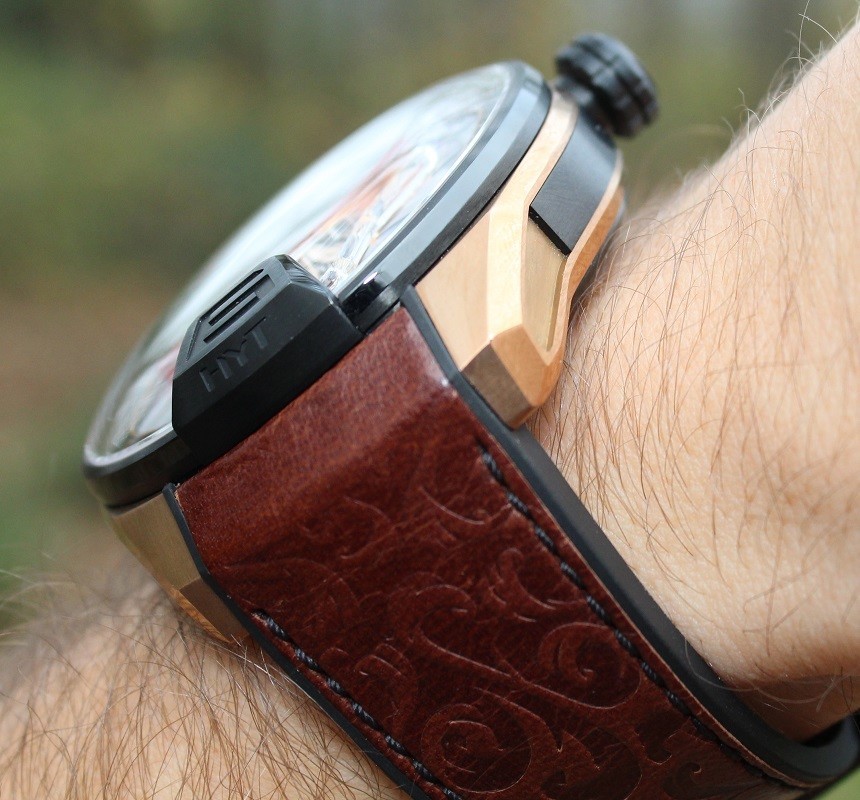
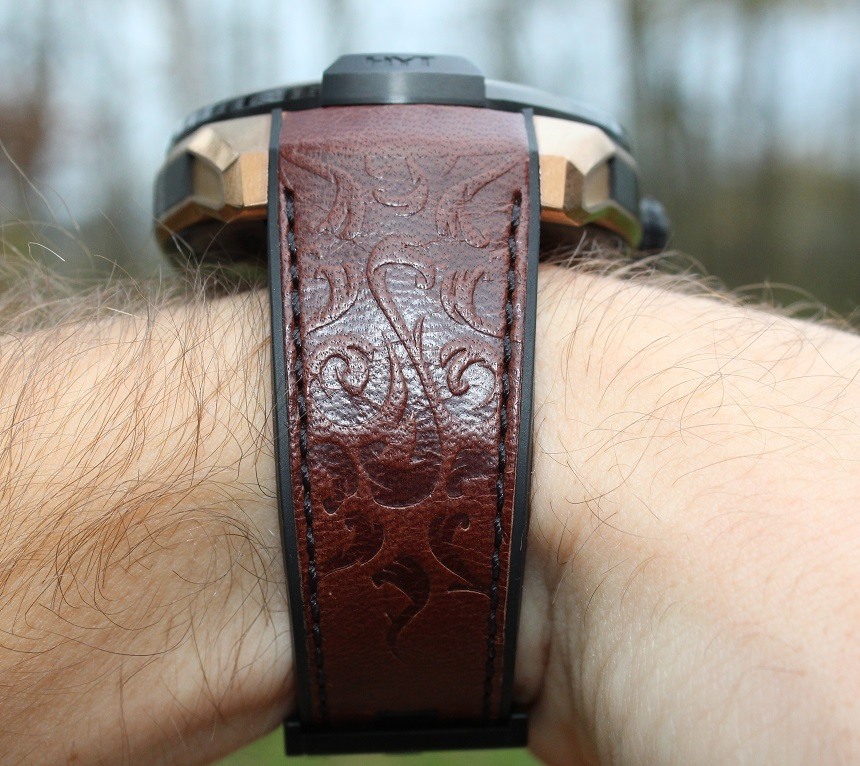
So what did I learn about the HYT Skull Maori watch after wearing it that I hadn’t gleaned from the press release? As stated, it is big, but as with all other HYT watches of these proportions, I found it very comfortable thanks to its lightness and the comfort of the strap. The strap is rubber-backed, with a leather-inlay featuring a debossed Maori tribal pattern. It’s actually a fair bit more comfortable than some of the sail cloth straps I’ve had on HYT watches in the past, as good as I thought those were. I have a relatively small wrist at six-and-a-half inches, but was able to wear this strap on the second eyelet, which I found surprising. To see how it sat on a woman’s wrist, I strapped it to my colleague and took a picture. As you can see, it looks quite at home on an even slighter wrist than mine, but this is probably thanks to the glamorous nature of this piece in particular.
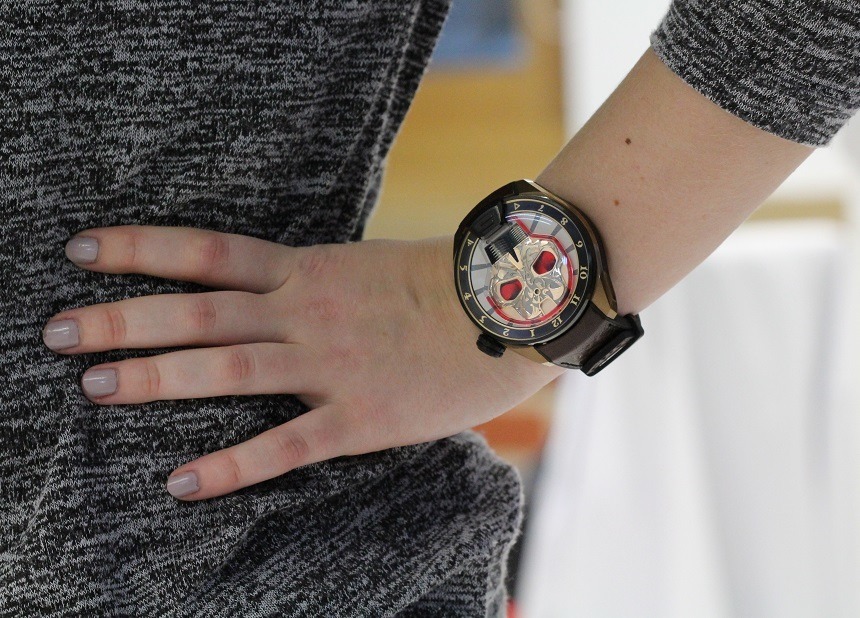
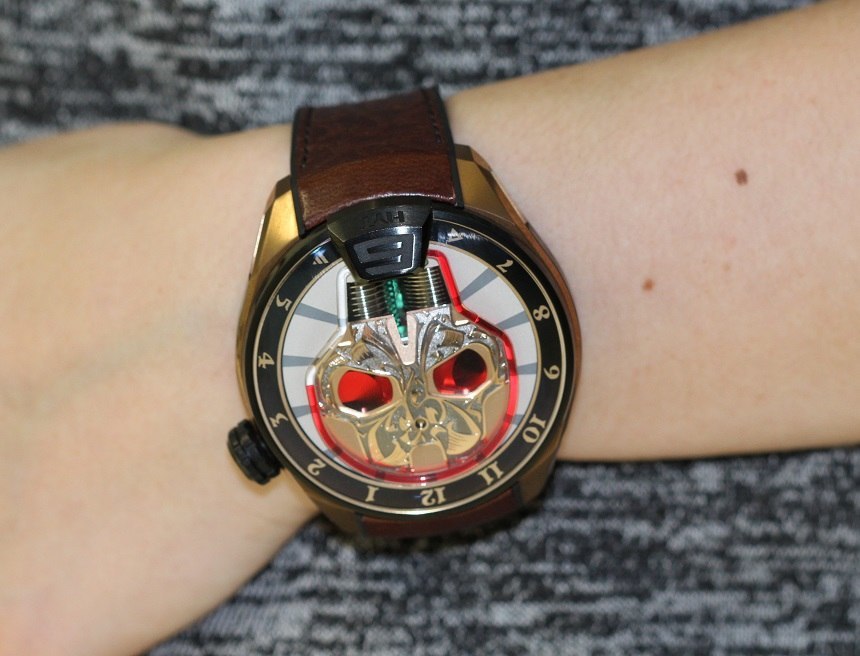
The engraving on the skull itself is less intricate than I expected, but incredibly sharp. In the press renders, the whole skull appeared to be rose gold in colour, but in the metal, the lower level is actually silvered. This provides a more definite contrast and has the effect of “slimming down” the dial decoration. The polished surfaces in relief are highly reflective and catch every stray beam of light. One of the benefits of this is that the light refracts into the capillary, illuminating the red fluid.
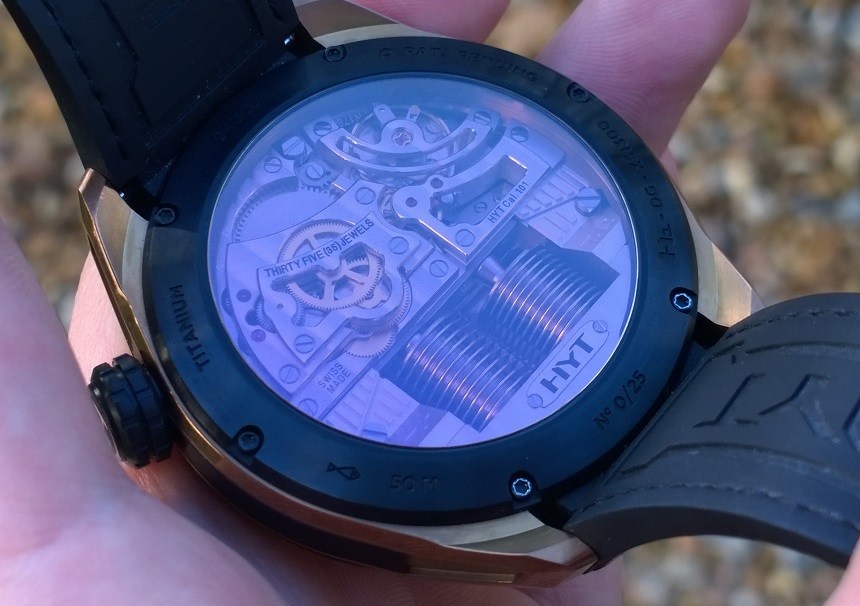
One relatively minor criticism levelled at this watch is the accuracy of the “Maori” design. I’ve heard a lot of chatter surrounding this element and thought it worth raising. It does appear to me that the designs are a little more reminiscent of art nouveau scroll-work than they are of Maori tribal culture, but there is a great deal of diversity and variation within any culture; and so claiming that it’s impossible to find a genuine Maori inspiration for this watch is just not true. It may be inspired by a very small percentage of Maori artwork, and therefore is arguably misnamed, but I think it is just about justifiable. It could have been a good opportunity for the brand to work with genuine Maori craftsmen, but the result is aesthetically pleasing nonetheless.
I did do a bit of digging into the history of Maori designs and only found a few patterns that looked vaguely like the skull’s markings, but then, I’ve not spent much time in or around the culture and am sure some proof of this style as Maori-inspired can be dredged up under duress. Like they say, the absence of proof is not proof of absence, so maybe I wasn’t looking in exactly the right places.
